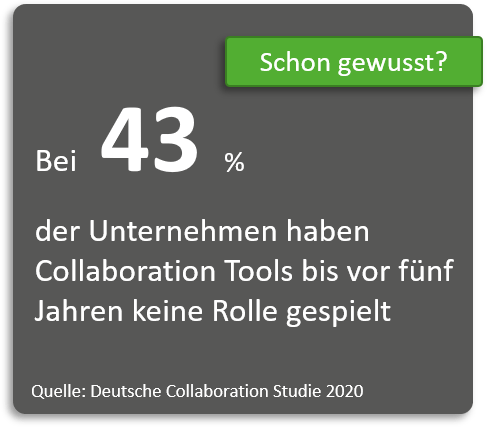Modern collaboration tools – how to make the introduction a success
Collaboration tools like Microsoft Teams, Slack, Skype or Zoom have been booming since the beginning of the COVID 19 pandemic. The goal of these tools is to improve the productivity of distributed teams by enabling them to communicate easily with colleagues, working together on projects or even holding video conferences with internal and external people. Used correctly, these can be a real blessing, but if used incorrectly, they are huge time and resource guzzlers. I would like to summarize briefly in this blog post why it makes sense to link MS Teams and your CRM.
“And suddenly Microsoft teams was there…” This is how many employees must have felt. From one day to the next, many organizations have decided – or had to decide – to shorten their actual planned roadmap for Microsoft 365 implementation and get down to business as quickly as possible.
In many ciompanies, Microsoft 365 (or as it was then still called Microsoft Office 365) was therefore introduced without further ado with the most diverse components.

No matter if SharePoint, Teams, ToDo, Planner or any other application from the MS 365 Kosmos is used And it is not too seldom that one or the other decision was made (too) quickly without building up a concept, asking individual users about their needs, drawing boundaries to other tools and services or going into detail about the implementation. The classic mistakes of every IT project, but it simply had to be done quickly…
For me and also for our company, a lot has changed due to the changes that are taking place. We, too, made some decisions in a hurry, which we had to turn back painfully. Nevertheless, the same applies here: Learn from mistakes and make them better in the future.
I would like to summarize some of the insights (and by far not all!) that we have gained through our own experience, but also within external projects.
What is the right structure? How do you find these for your company or how can existing structures be adapted in a targeted manner? And: How is it even possible to think it through from the beginning in such a way that it makes sense in the long term and can be integrated with other tools and services?
I will report on this topic in a second part and I would be pleased if you would stay with it.

